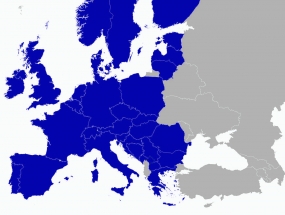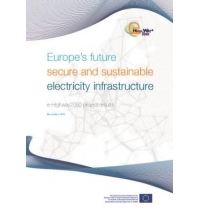eHighway 2050: Modular Development Plan of the Pan-European Transmission System 2050
client: ENTSO-E (Belgium)
type: Study (Transmission, Market)
finishing date: December 2015
team: Consortium 15 TSOs, 10 Universities / Institutes, 3 Associations; EKC team: Dragana Orlic - Coordinator of EKC’s activities within the Project, D. Vlaisavljevic
Three-year long R&D project to develop and to apply a methodology for the long-term development of the Pan-European transmission network.
The project aims at delivering a top-down methodology to support the planning from 2020 to 2050.
First, it implements a set of future power scenarios, including generation units, the possible use of electricity storage and demand-side management solutions: scenarios for power localization are proposed with assumptions on the energy mix in each of the connected clusters covering the ENTSO-E area. Network studies are performed to detect the weak points when implementing the scenarios for 2050.
Grid architectures options and a modular development plan are then proposed, including electricity highways, on the basis of power flow calculations, network stability analysis, socio-economic and network governance considerations, and with remarks from the consultation of European stakeholders.
In parallel, an advanced planning methodology is designed, developed and tested with academic laboratories to address a few critical aspects of the above planning methodology, which may impact the robustness of the resulting architectures.
Project is organized in 10 WP (Work Packages). Each WP has several Tasks.
EKC participates in:
- WP1: Boundary Conditions
- WP2: Developing the grid architecture options as a function of the retained scenarios for 2050
- WP3: Technology portfolio to meet the 2050 scenarios
- WP4: Modular development & Operations
Type of services provided:
WP1:
Contribution to Task 1.1: Review of useful policies and codes and Task 1.3: Economic and financial boundary conditions
WP2: EKC was Task 2.3 leader
Realization of power market simulations for the 2050 horizon based on defined scenarios (from Task 2.1) and simplified grid representation (from Task 2.2).
Power market simulations allocates generation and consumption on hourly basis in order to meet system adequacy requirements and to guarantee security of supply. Power market simulations take into account:
- Installed dispatchable generation mix in each cluster by “fuel”/technology,
- Non dispatchable production from renewable energy sources - modeled according to time series,
- Consumption in each cluster,
- New possibilities to demand side management and electricity storage
Due to the mutual influence between transmission infrastructure and market behavior of generation caused by constraints in exchange capacities a high priority is given to a close interaction with Task 2.4. Candidate grid architecture for 2050 (led by Swissgrid)
WP3:
Contribution to Task 3.2: Technology assessment
WP4:
Contribution to Task 4.1: Operational validation of the grid reinforcements for 2050 and Task 4.3: Intermediate grid architecture for 2030 and 2040


